| Section |
Page |
| Catalyst 2960 Switch Software�Configuration Guide |
1 |
| Contents |
3 |
| Preface |
29 |
| Audience |
29 |
| Purpose |
29 |
| Conventions |
30 |
| Related Publications |
30 |
| Obtaining Documentation, Obtaining Support, and Security Guidelines |
32 |
| Overview |
33 |
| Features |
33 |
| Ease-of-Deployment and Ease-of-Use Features |
33 |
| Performance Features |
34 |
| Management Options |
35 |
| Manageability Features |
36 |
| Availability and Redundancy Features |
38 |
| VLAN Features |
39 |
| Security Features |
39 |
| QoS and CoS Features |
41 |
| Monitoring Features |
42 |
| Default Settings After Initial Switch Configuration |
42 |
| Network Configuration Examples |
44 |
| Design Concepts for Using the Switch |
44 |
| Small to Medium-Sized Network Using Catalyst 2960 Switches |
48 |
| Long-Distance, High-Bandwidth Transport Configuration |
49 |
| Where to Go Next |
50 |
| Using the Command-Line Interface |
51 |
| Understanding Command Modes |
51 |
| Understanding the Help System |
53 |
| Understanding Abbreviated Commands |
54 |
| Understanding no and default Forms of Commands |
54 |
| Understanding CLI Error Messages |
55 |
| Using Configuration Logging |
55 |
| Using Command History |
56 |
| Changing the Command History Buffer Size |
56 |
| Recalling Commands |
56 |
| Disabling the Command History Feature |
57 |
| Using Editing Features |
57 |
| Enabling and Disabling Editing Features |
57 |
| Editing Commands through Keystrokes |
57 |
| Editing Command Lines that Wrap |
59 |
| Searching and Filtering Output of show and more Commands |
60 |
| Accessing the CLI |
60 |
| Accessing the CLI through a Console Connection or through Telnet |
60 |
| Assigning the Switch IP Address and Default Gateway |
61 |
| Understanding the Boot Process |
61 |
| Assigning Switch Information |
62 |
| Default Switch Information |
63 |
| Understanding DHCP-Based Autoconfiguration |
63 |
| DHCP Client Request Process |
64 |
| Configuring DHCP-Based Autoconfiguration |
65 |
| DHCP Server Configuration Guidelines |
65 |
| Configuring the TFTP Server |
66 |
| Configuring the DNS |
66 |
| Configuring the Relay Device |
66 |
| Obtaining Configuration Files |
67 |
| Example Configuration |
68 |
| Manually Assigning IP Information |
70 |
| Checking and Saving the Running Configuration |
70 |
| Modifying the Startup Configuration |
71 |
| Default Boot Configuration |
72 |
| Automatically Downloading a Configuration File |
72 |
| Specifying the Filename to Read and Write the System Configuration |
72 |
| Booting Manually |
73 |
| Booting a Specific Software Image |
74 |
| Controlling Environment Variables |
74 |
| Scheduling a Reload of the Software Image |
76 |
| Configuring a Scheduled Reload |
76 |
| Displaying Scheduled Reload Information |
77 |
| Configuring Cisco IOS CNS Agents |
79 |
| Understanding Cisco Configuration Engine Software |
79 |
| Configuration Service |
80 |
| Event Service |
81 |
| NameSpace Mapper |
81 |
| What You Should Know About the CNS IDs and Device Hostnames |
81 |
| ConfigID |
81 |
| DeviceID |
82 |
| Hostname and DeviceID |
82 |
| Using Hostname, DeviceID, and ConfigID |
82 |
| Understanding Cisco IOS Agents |
83 |
| Initial Configuration |
83 |
| Incremental (Partial) Configuration |
84 |
| Synchronized Configuration |
84 |
| Configuring Cisco IOS Agents |
84 |
| Enabling Automated CNS Configuration |
84 |
| Enabling the CNS Event Agent |
86 |
| Enabling the Cisco IOS CNS Agent |
87 |
| Enabling an Initial Configuration |
87 |
| Enabling a Partial Configuration |
89 |
| Displaying CNS Configuration |
90 |
| Clustering Switches |
91 |
| Understanding Switch Clusters |
91 |
| Cluster Command Switch Characteristics |
93 |
| Standby Cluster Command Switch Characteristics |
93 |
| Candidate Switch and Cluster Member Switch Characteristics |
93 |
| Planning a Switch Cluster |
94 |
| Automatic Discovery of Cluster Candidates and Members |
94 |
| Discovery Through CDP Hops |
95 |
| Discovery Through Non-CDP-Capable and Noncluster-Capable Devices |
96 |
| Discovery Through Different VLANs |
96 |
| Discovery Through Different Management VLANs |
97 |
| Discovery of Newly Installed Switches |
98 |
| HSRP and Standby Cluster Command Switches |
99 |
| Virtual IP Addresses |
100 |
| Other Considerations for Cluster Standby Groups |
100 |
| Automatic Recovery of Cluster Configuration |
101 |
| IP Addresses |
102 |
| Hostnames |
102 |
| Passwords |
103 |
| SNMP Community Strings |
103 |
| TACACS+ and RADIUS |
104 |
| LRE Profiles ��� |
104 |
| Using the CLI to Manage Switch Clusters |
104 |
| Catalyst�1900 and Catalyst�2820 CLI Considerations |
104 |
| Using SNMP to Manage Switch Clusters |
105 |
| Administering the Switch |
107 |
| Managing the System Time and Date |
107 |
| Understanding the System Clock |
107 |
| Understanding Network Time Protocol |
108 |
| Configuring NTP |
109 |
| Default NTP Configuration |
110 |
| Configuring NTP Authentication |
110 |
| Configuring NTP Associations |
111 |
| Configuring NTP Broadcast Service |
112 |
| Configuring NTP Access Restrictions |
114 |
| Configuring the Source IP Address for NTP Packets |
116 |
| Displaying the NTP Configuration |
117 |
| Configuring Time and Date Manually |
117 |
| Setting the System Clock |
117 |
| Displaying the Time and Date Configuration |
118 |
| Configuring the Time Zone |
118 |
| Configuring Summer Time (Daylight Saving Time) |
119 |
| Configuring a System Name and Prompt |
120 |
| Default System Name and Prompt Configuration |
121 |
| Configuring a System Name |
121 |
| Understanding DNS |
121 |
| Default DNS Configuration |
122 |
| Setting Up DNS |
122 |
| Displaying the DNS Configuration |
123 |
| Creating a Banner |
123 |
| Default Banner Configuration |
123 |
| Configuring a Message-of-the-Day Login Banner |
124 |
| Configuring a Login Banner |
125 |
| Managing the MAC Address Table |
125 |
| Building the Address Table |
126 |
| MAC Addresses and VLANs |
126 |
| Default MAC Address Table Configuration |
127 |
| Changing the Address Aging Time |
127 |
| Removing Dynamic Address Entries |
128 |
| Configuring MAC Address Notification Traps |
128 |
| Adding and Removing Static Address Entries |
130 |
| Configuring Unicast MAC Address Filtering |
131 |
| Displaying Address Table Entries |
132 |
| Managing the ARP Table |
132 |
| Configuring SDM Templates |
133 |
| Understanding the SDM Templates |
133 |
| Configuring the Switch SDM Template |
134 |
| Default SDM Template |
134 |
| SDM Template Configuration Guidelines |
134 |
| Setting the SDM Template |
134 |
| .Displaying the SDM Templates |
135 |
| Configuring Switch-Based Authentication |
137 |
| Preventing Unauthorized Access to Your Switch |
137 |
| Protecting Access to Privileged EXEC Commands |
138 |
| Default Password and Privilege Level Configuration |
138 |
| Setting or Changing a Static Enable Password |
139 |
| Protecting Enable and Enable Secret Passwords with Encryption |
139 |
| Disabling Password Recovery |
141 |
| Setting a Telnet Password for a Terminal Line |
142 |
| Configuring Username and Password Pairs |
142 |
| Configuring Multiple Privilege Levels |
143 |
| Setting the Privilege Level for a Command |
144 |
| Changing the Default Privilege Level for Lines |
145 |
| Logging into and Exiting a Privilege Level |
145 |
| Controlling Switch Access with TACACS+ |
146 |
| Understanding TACACS+ |
146 |
| TACACS+ Operation |
148 |
| Configuring TACACS+ |
148 |
| Default TACACS+ Configuration |
149 |
| Identifying the TACACS+ Server Host and Setting the Authentication Key |
149 |
| Configuring TACACS+ Login Authentication |
150 |
| Configuring TACACS+ Authorization for Privileged EXEC Access and Network Services |
152 |
| Starting TACACS+ Accounting |
153 |
| Displaying the TACACS+ Configuration |
153 |
| Controlling Switch Access with RADIUS |
153 |
| Understanding RADIUS |
154 |
| RADIUS Operation |
155 |
| Configuring RADIUS |
155 |
| Default RADIUS Configuration |
156 |
| Identifying the RADIUS Server Host |
156 |
| Configuring RADIUS Login Authentication |
159 |
| Defining AAA Server Groups |
161 |
| Configuring RADIUS Authorization for User Privileged Access and Network Services |
163 |
| Starting RADIUS Accounting |
164 |
| Configuring Settings for All RADIUS Servers |
165 |
| Configuring the Switch to Use Vendor-Specific RADIUS Attributes |
165 |
| Configuring the Switch for Vendor-Proprietary RADIUS Server Communication |
167 |
| Displaying the RADIUS Configuration |
167 |
| Configuring the Switch for Local Authentication and Authorization |
168 |
| Configuring the Switch for Secure Shell |
169 |
| Understanding SSH |
169 |
| SSH Servers, Integrated Clients, and Supported Versions |
169 |
| Limitations |
170 |
| Configuring SSH |
170 |
| Configuration Guidelines |
170 |
| Setting Up the Switch to Run SSH |
171 |
| Configuring the SSH Server |
172 |
| Displaying the SSH Configuration and Status |
173 |
| Configuring the Switch for Secure Socket Layer HTTP |
173 |
| Understanding Secure HTTP Servers and Clients |
173 |
| Certificate Authority Trustpoints |
174 |
| CipherSuites |
175 |
| Configuring Secure HTTP Servers and Clients |
176 |
| Default SSL Configuration |
176 |
| SSL Configuration Guidelines |
176 |
| Configuring a CA Trustpoint |
176 |
| Configuring the Secure HTTP Server |
177 |
| Configuring the Secure HTTP Client |
179 |
| Displaying Secure HTTP Server and Client Status |
179 |
| Configuring the Switch for Secure Copy Protocol |
179 |
| Information About Secure Copy |
180 |
| Configuring IEEE 802.1x Port-Based Authentication |
181 |
| Understanding IEEE 802.1x Port-Based Authentication |
181 |
| Device Roles |
182 |
| Authentication Process |
183 |
| Authentication Initiation and Message Exchange |
185 |
| Ports in Authorized and Unauthorized States |
187 |
| IEEE 802.1x Host Mode |
187 |
| IEEE 802.1x Accounting |
188 |
| IEEE 802.1x Accounting Attribute-Value Pairs |
188 |
| Using IEEE 802.1x Authentication with VLAN Assignment |
189 |
| Using IEEE 802.1x Authentication with Guest VLAN |
191 |
| Using IEEE 802.1x Authentication with Restricted VLAN |
192 |
| Using IEEE 802.1x Authentication with Inaccessible Authentication Bypass |
193 |
| Using IEEE 802.1x Authentication with Voice VLAN Ports |
194 |
| Using IEEE 802.1x Authentication with Port Security |
194 |
| Using IEEE 802.1x Authentication with Wake-on-LAN |
195 |
| Using IEEE 802.1x Authentication with MAC Authentication Bypass |
196 |
| Using Network Admission Control Layer 2 IEEE 802.1x Validation |
197 |
| Using Web Authentication |
197 |
| Web Authentication with Automatic MAC Check |
198 |
| Configuring IEEE 802.1x Authentication |
198 |
| Default IEEE 802.1x Authentication Configuration |
199 |
| IEEE 802.1x Authentication Configuration Guidelines |
200 |
| IEEE 802.1x Authentication |
200 |
| VLAN Assignment, Guest VLAN, Restricted VLAN, and Inaccessible Authentication Bypass |
201 |
| MAC Authentication Bypass |
202 |
| Upgrading from a Previous Software Release |
202 |
| Configuring IEEE 802.1x Authentication |
202 |
| Configuring the Switch-to-RADIUS-Server Communication |
204 |
| Configuring the Host Mode |
205 |
| Configuring Periodic Re-Authentication |
205 |
| Manually Re-Authenticating a Client Connected to a Port |
206 |
| Changing the Quiet Period |
206 |
| Changing the Switch-to-Client Retransmission Time |
207 |
| Setting the Switch-to-Client Frame-Retransmission Number |
208 |
| Setting the Re-Authentication Number |
208 |
| Configuring IEEE 802.1x Accounting |
209 |
| Configuring a Guest VLAN |
210 |
| Configuring a Restricted VLAN |
211 |
| Configuring the Inaccessible Authentication Bypass Feature |
213 |
| Configuring IEEE 802.1x Authentication with WoL |
215 |
| Configuring MAC Authentication Bypass |
216 |
| Configuring NAC Layer 2 IEEE 802.1x Validation |
217 |
| Configuring Web Authentication |
218 |
| Disabling IEEE 802.1x Authentication on the Port |
220 |
| Resetting the IEEE 802.1x Authentication Configuration to the Default Values |
221 |
| Displaying IEEE 802.1x Statistics and Status |
221 |
| Configuring Interface Characteristics |
223 |
| Understanding Interface Types |
223 |
| Port-Based VLANs |
224 |
| Switch Ports |
224 |
| Access Ports |
224 |
| Trunk Ports |
225 |
| EtherChannel Port Groups |
225 |
| Dual-Purpose Uplink Ports |
226 |
| Connecting Interfaces |
226 |
| Using Interface Configuration Mode |
226 |
| Procedures for Configuring Interfaces |
227 |
| Configuring a Range of Interfaces |
228 |
| Configuring and Using Interface Range Macros |
229 |
| Configuring Ethernet Interfaces |
231 |
| Default Ethernet Interface Configuration |
231 |
| Setting the Type of a Dual-Purpose Uplink Port |
232 |
| Configuring Interface Speed and Duplex Mode |
234 |
| Speed and Duplex Configuration Guidelines |
234 |
| Setting the Interface Speed and Duplex Parameters |
235 |
| Configuring IEEE 802.3x Flow Control |
236 |
| Configuring Auto-MDIX on an Interface |
237 |
| Adding a Description for an Interface |
238 |
| Configuring the System MTU |
238 |
| Monitoring and Maintaining the Interfaces |
240 |
| Monitoring Interface Status |
240 |
| Clearing and Resetting Interfaces and Counters |
241 |
| Shutting Down and Restarting the Interface |
241 |
| Configuring Smartports Macros |
243 |
| Understanding Smartports Macros |
243 |
| Configuring Smartports Macros |
244 |
| Default Smartports Macro Configuration |
244 |
| Smartports Macro Configuration Guidelines |
244 |
| Creating Smartports Macros |
246 |
| Applying Smartports Macros |
247 |
| Applying Cisco-Default Smartports Macros |
248 |
| Displaying Smartports Macros |
250 |
| Configuring VLANs |
251 |
| Understanding VLANs |
251 |
| Supported VLANs |
252 |
| VLAN Port Membership Modes |
253 |
| Configuring Normal-Range VLANs |
254 |
| Token Ring VLANs |
255 |
| Normal-Range VLAN Configuration Guidelines |
255 |
| VLAN Configuration Mode Options |
256 |
| VLAN Configuration in config-vlan Mode |
256 |
| VLAN Configuration in VLAN Database Configuration Mode |
256 |
| Saving VLAN Configuration |
256 |
| Default Ethernet VLAN Configuration |
257 |
| Creating or Modifying an Ethernet VLAN |
258 |
| Deleting a VLAN |
259 |
| Assigning Static-Access Ports to a VLAN |
260 |
| Configuring Extended-Range VLANs |
261 |
| Default VLAN Configuration |
261 |
| Extended-Range VLAN Configuration Guidelines |
262 |
| Creating an Extended-Range VLAN |
262 |
| Displaying VLANs |
263 |
| Configuring VLAN Trunks |
264 |
| Trunking Overview |
264 |
| IEEE 802.1Q Configuration Considerations |
265 |
| Default Layer 2 Ethernet Interface VLAN Configuration |
266 |
| Configuring an Ethernet Interface as a Trunk Port |
266 |
| Interaction with Other Features |
266 |
| Configuring a Trunk Port |
267 |
| Defining the Allowed VLANs on a Trunk |
268 |
| Changing the Pruning-Eligible List |
269 |
| Configuring the Native VLAN for Untagged Traffic |
269 |
| Configuring Trunk Ports for Load Sharing |
270 |
| Load Sharing Using STP Port Priorities |
270 |
| Load Sharing Using STP Path Cost |
272 |
| Configuring VMPS |
273 |
| Understanding VMPS |
274 |
| Dynamic-Access Port VLAN Membership |
274 |
| Default VMPS Client Configuration |
275 |
| VMPS Configuration Guidelines |
275 |
| Configuring the VMPS Client |
275 |
| Entering the IP Address of the VMPS |
276 |
| Configuring Dynamic-Access Ports on VMPS Clients |
276 |
| Reconfirming VLAN Memberships |
277 |
| Changing the Reconfirmation Interval |
277 |
| Changing the Retry Count |
278 |
| Monitoring the VMPS |
278 |
| Troubleshooting Dynamic-Access Port VLAN Membership |
279 |
| VMPS Configuration Example |
279 |
| Configuring VTP |
281 |
| Understanding VTP |
281 |
| The VTP Domain |
282 |
| VTP Modes |
283 |
| VTP Advertisements |
283 |
| VTP Version 2 |
284 |
| VTP Pruning |
284 |
| Configuring VTP |
286 |
| Default VTP Configuration |
286 |
| VTP Configuration Options |
287 |
| VTP Configuration in Global Configuration Mode |
287 |
| VTP Configuration in VLAN Database Configuration Mode |
287 |
| VTP Configuration Guidelines |
288 |
| Domain Names |
288 |
| Passwords |
288 |
| VTP Version |
288 |
| Configuration Requirements |
289 |
| Configuring a VTP Server |
289 |
| Configuring a VTP Client |
291 |
| Disabling VTP (VTP Transparent Mode) |
292 |
| Enabling VTP Version 2 |
293 |
| Enabling VTP Pruning |
294 |
| Adding a VTP Client Switch to a VTP Domain |
294 |
| Monitoring VTP |
296 |
| Configuring Voice VLAN |
297 |
| Understanding Voice VLAN |
297 |
| Cisco IP Phone Voice Traffic |
298 |
| Cisco IP Phone Data Traffic |
298 |
| Configuring Voice VLAN |
299 |
| Default Voice VLAN Configuration |
299 |
| Voice VLAN Configuration Guidelines |
299 |
| Configuring a Port Connected to a Cisco�7960 IP Phone |
300 |
| Configuring Cisco IP Phone Voice Traffic |
300 |
| Configuring the Priority of Incoming Data Frames |
302 |
| Displaying Voice VLAN |
302 |
| Configuring STP |
303 |
| Understanding Spanning-Tree Features |
303 |
| STP Overview |
304 |
| Spanning-Tree Topology and BPDUs |
305 |
| Bridge ID, Switch Priority, and Extended System ID |
306 |
| Spanning-Tree Interface States |
306 |
| Blocking State |
308 |
| Listening State |
308 |
| Learning State |
308 |
| Forwarding State |
308 |
| Disabled State |
309 |
| How a Switch or Port Becomes the Root Switch or Root Port |
309 |
| Spanning Tree and Redundant Connectivity |
310 |
| Spanning-Tree Address Management |
310 |
| Accelerated Aging to Retain Connectivity |
310 |
| Spanning-Tree Modes and Protocols |
311 |
| Supported Spanning-Tree Instances |
311 |
| Spanning-Tree Interoperability and Backward Compatibility |
312 |
| STP and IEEE 802.1Q Trunks |
312 |
| Configuring Spanning-Tree Features |
312 |
| Default Spanning-Tree Configuration |
313 |
| Spanning-Tree Configuration Guidelines |
314 |
| Changing the Spanning-Tree Mode. |
315 |
| Disabling Spanning Tree |
316 |
| Configuring the Root Switch |
316 |
| Configuring a Secondary Root Switch |
318 |
| Configuring Port Priority |
318 |
| Configuring Path Cost |
320 |
| Configuring the Switch Priority of a VLAN |
321 |
| Configuring Spanning-Tree Timers |
322 |
| Configuring the Hello Time |
322 |
| Configuring the Forwarding-Delay Time for a VLAN |
323 |
| Configuring the Maximum-Aging Time for a VLAN |
323 |
| Configuring the Transmit Hold-Count |
324 |
| Displaying the Spanning-Tree Status |
324 |
| Configuring MSTP |
325 |
| Understanding MSTP |
326 |
| Multiple Spanning-Tree Regions |
326 |
| IST, CIST, and CST |
327 |
| Operations Within an MST Region |
327 |
| Operations Between MST Regions |
328 |
| IEEE 802.1s Terminology |
329 |
| Hop Count |
329 |
| Boundary Ports |
330 |
| IEEE 802.1s Implementation |
330 |
| Port Role Naming Change |
331 |
| Interoperation Between Legacy and Standard Switches |
331 |
| Detecting Unidirectional Link Failure |
332 |
| Interoperability with IEEE 802.1D STP |
332 |
| Understanding RSTP |
332 |
| Port Roles and the Active Topology |
333 |
| Rapid Convergence |
334 |
| Synchronization of Port Roles |
335 |
| Bridge Protocol Data Unit Format and Processing |
336 |
| Processing Superior BPDU Information |
337 |
| Processing Inferior BPDU Information |
337 |
| Topology Changes |
337 |
| Configuring MSTP Features |
338 |
| Default MSTP Configuration |
338 |
| MSTP Configuration Guidelines |
339 |
| Specifying the MST Region Configuration and Enabling MSTP |
340 |
| Configuring the Root Switch |
341 |
| Configuring a Secondary Root Switch |
342 |
| Configuring Port Priority |
343 |
| Configuring Path Cost |
344 |
| Configuring the Switch Priority |
345 |
| Configuring the Hello Time |
346 |
| Configuring the Forwarding-Delay Time |
347 |
| Configuring the Maximum-Aging Time |
347 |
| Configuring the Maximum-Hop Count |
348 |
| Specifying the Link Type to Ensure Rapid Transitions |
348 |
| Designating the Neighbor Type |
349 |
| Restarting the Protocol Migration Process |
349 |
| Displaying the MST Configuration and Status |
350 |
| Configuring Optional Spanning-Tree Features |
351 |
| Understanding Optional Spanning-Tree Features |
351 |
| Understanding Port Fast |
352 |
| Understanding BPDU Guard |
352 |
| Understanding BPDU Filtering |
353 |
| Understanding UplinkFast |
353 |
| Understanding BackboneFast |
355 |
| Understanding EtherChannel Guard |
357 |
| Understanding Root Guard |
358 |
| Understanding Loop Guard |
359 |
| Configuring Optional Spanning-Tree Features |
359 |
| Default Optional Spanning-Tree Configuration |
359 |
| Optional Spanning-Tree Configuration Guidelines |
360 |
| Enabling Port Fast |
360 |
| Enabling BPDU Guard |
361 |
| Enabling BPDU Filtering |
362 |
| Enabling UplinkFast for Use with Redundant Links |
363 |
| Enabling BackboneFast |
363 |
| Enabling EtherChannel Guard |
364 |
| Enabling Root Guard |
365 |
| Enabling Loop Guard |
365 |
| Displaying the Spanning-Tree Status |
366 |
| Configuring IGMP Snooping and MVR |
367 |
| Understanding IGMP Snooping |
367 |
| IGMP Versions |
368 |
| Joining a Multicast Group |
369 |
| Leaving a Multicast Group |
371 |
| Immediate Leave |
371 |
| IGMP Configurable-Leave Timer |
371 |
| IGMP Report Suppression |
372 |
| Configuring IGMP Snooping |
372 |
| Default IGMP Snooping Configuration |
372 |
| Enabling or Disabling IGMP Snooping |
373 |
| Setting the Snooping Method |
374 |
| Configuring a Multicast Router Port |
375 |
| Configuring a Host Statically to Join a Group |
376 |
| Enabling IGMP Immediate Leave |
376 |
| Configuring the IGMP Leave Timer |
377 |
| Configuring TCN-Related Commands |
378 |
| Controlling the Multicast Flooding Time After a TCN Event |
378 |
| Recovering from Flood Mode |
378 |
| Disabling Multicast Flooding During a TCN Event |
379 |
| Configuring the IGMP Snooping Querier |
380 |
| Disabling IGMP Report Suppression |
381 |
| Displaying IGMP Snooping Information |
381 |
| Understanding Multicast VLAN Registration |
383 |
| Using MVR in a Multicast Television Application |
384 |
| Configuring MVR |
385 |
| Default MVR Configuration |
385 |
| MVR Configuration Guidelines and Limitations |
386 |
| Configuring MVR Global Parameters |
386 |
| Configuring MVR Interfaces |
387 |
| Displaying MVR Information |
389 |
| Configuring IGMP Filtering and Throttling |
389 |
| Default IGMP Filtering and Throttling Configuration |
390 |
| Configuring IGMP Profiles |
390 |
| Applying IGMP Profiles |
391 |
| Setting the Maximum Number of IGMP Groups |
392 |
| Configuring the IGMP Throttling Action |
393 |
| Displaying IGMP Filtering and Throttling Configuration |
394 |
| Configuring Port-Based Traffic Control |
395 |
| Configuring Storm Control |
395 |
| Understanding Storm Control |
395 |
| Default Storm Control Configuration |
397 |
| Configuring Storm Control and Threshold Levels |
397 |
| Configuring Protected Ports |
399 |
| Default Protected Port Configuration |
400 |
| Protected Port Configuration Guidelines |
400 |
| Configuring a Protected Port |
400 |
| Configuring Port Blocking |
401 |
| Default Port Blocking Configuration |
401 |
| Blocking Flooded Traffic on an Interface |
401 |
| Configuring Port Security |
402 |
| Understanding Port Security |
402 |
| Secure MAC Addresses |
402 |
| Security Violations |
403 |
| Default Port Security Configuration |
404 |
| Port Security Configuration Guidelines |
404 |
| Enabling and Configuring Port Security |
405 |
| Enabling and Configuring Port Security Aging |
410 |
| Displaying Port-Based Traffic Control Settings |
411 |
| Configuring CDP |
413 |
| Understanding CDP |
413 |
| Configuring CDP |
414 |
| Default CDP Configuration |
414 |
| Configuring the CDP Characteristics |
414 |
| Disabling and Enabling CDP |
415 |
| Disabling and Enabling CDP on an Interface |
416 |
| Monitoring and Maintaining CDP |
416 |
| Configuring LLDP and LLDP-MED |
419 |
| Understanding LLDP and LLDP-MED |
419 |
| Understanding LLDP |
419 |
| Understanding LLDP-MED |
420 |
| Configuring LLDP and LLDP-MED |
421 |
| Default LLDP Configuration |
421 |
| Configuring LLDP Characteristics |
422 |
| Disabling and Enabling LLDP Globally |
423 |
| Disabling and Enabling LLDP on an Interface |
423 |
| Configuring LLDP-MED TLVs |
424 |
| Monitoring and Maintaining LLDP and LLDP-MED |
425 |
| Configuring UDLD |
427 |
| Understanding UDLD |
427 |
| Modes of Operation |
427 |
| Methods to Detect Unidirectional Links |
428 |
| Configuring UDLD |
430 |
| Default UDLD Configuration |
430 |
| Configuration Guidelines |
430 |
| Enabling UDLD Globally |
431 |
| Enabling UDLD on an Interface |
431 |
| Resetting an Interface Disabled by UDLD |
432 |
| Displaying UDLD Status |
432 |
| Configuring SPAN and RSPAN |
433 |
| Understanding SPAN and RSPAN |
433 |
| Local SPAN |
434 |
| Remote SPAN |
434 |
| SPAN and RSPAN Concepts and Terminology |
435 |
| SPAN Sessions |
435 |
| Monitored Traffic |
436 |
| Source Ports |
437 |
| Source VLANs |
438 |
| VLAN Filtering |
438 |
| Destination Port |
438 |
| RSPAN VLAN |
439 |
| SPAN and RSPAN Interaction with Other Features |
440 |
| Configuring SPAN and RSPAN |
441 |
| Default SPAN and RSPAN Configuration |
441 |
| Configuring Local SPAN |
441 |
| SPAN Configuration Guidelines |
442 |
| Creating a Local SPAN Session |
442 |
| Creating a Local SPAN Session and Configuring Incoming Traffic |
445 |
| Specifying VLANs to Filter |
446 |
| Configuring RSPAN |
447 |
| RSPAN Configuration Guidelines |
448 |
| Configuring a VLAN as an RSPAN VLAN |
448 |
| Creating an RSPAN Source Session |
449 |
| Creating an RSPAN Destination Session |
451 |
| Creating an RSPAN Destination Session and Configuring Incoming Traffic |
452 |
| Specifying VLANs to Filter |
453 |
| Displaying SPAN and RSPAN Status |
454 |
| Configuring RMON |
455 |
| Understanding RMON |
455 |
| Configuring RMON |
456 |
| Default RMON Configuration |
457 |
| Configuring RMON Alarms and Events |
457 |
| Collecting Group History Statistics on an Interface |
459 |
| Collecting Group Ethernet Statistics on an Interface |
459 |
| Displaying RMON Status |
460 |
| Configuring System Message Logging |
461 |
| Understanding System Message Logging |
461 |
| Configuring System Message Logging |
462 |
| System Log Message Format |
462 |
| Default System Message Logging Configuration |
463 |
| Disabling Message Logging |
464 |
| Setting the Message Display Destination Device |
465 |
| Synchronizing Log Messages |
466 |
| Enabling and Disabling Time Stamps on Log Messages |
467 |
| Enabling and Disabling Sequence Numbers in Log Messages |
468 |
| Defining the Message Severity Level |
468 |
| Limiting Syslog Messages Sent to the History Table and to SNMP |
470 |
| Enabling the Configuration-Change Logger |
470 |
| Configuring UNIX Syslog Servers |
472 |
| Logging Messages to a UNIX Syslog Daemon |
472 |
| Configuring the UNIX System Logging Facility |
472 |
| Displaying the Logging Configuration |
473 |
| Configuring SNMP |
475 |
| Understanding SNMP |
475 |
| SNMP Versions |
476 |
| SNMP Manager Functions |
477 |
| SNMP Agent Functions |
478 |
| SNMP Community Strings |
478 |
| Using SNMP to Access MIB Variables |
478 |
| SNMP Notifications |
479 |
| SNMP ifIndex MIB Object Values |
480 |
| Configuring SNMP |
480 |
| Default SNMP Configuration |
481 |
| SNMP Configuration Guidelines |
481 |
| Disabling the SNMP Agent |
482 |
| Configuring Community Strings |
482 |
| Configuring SNMP Groups and Users |
484 |
| Configuring SNMP Notifications |
486 |
| Setting the Agent Contact and Location Information |
489 |
| Limiting TFTP Servers Used Through SNMP |
490 |
| SNMP Examples |
491 |
| Displaying SNMP Status |
492 |
| Configuring Cisco IOS IP SLAs Operations |
493 |
| Understanding Cisco IOS IP SLAs |
493 |
| Using Cisco IOS IP SLAs to Measure Network Performance |
494 |
| IP SLAs Responder and IP SLAs Control Protocol |
495 |
| Response Time Computation for IP SLAs |
496 |
| Configuring IP SLAs Operations |
497 |
| Default Configuration |
497 |
| Configuration Guidelines |
497 |
| Configuring the IP SLAs Responder |
498 |
| Monitoring IP SLAs Operations |
499 |
| Configuring QoS |
501 |
| Understanding QoS |
501 |
| Basic QoS Model |
503 |
| Classification |
505 |
| Classification Based on QoS ACLs |
507 |
| Classification Based on Class Maps and Policy Maps |
507 |
| Policing and Marking |
508 |
| Policing on Physical Ports |
509 |
| Mapping Tables |
511 |
| Queueing and Scheduling Overview |
512 |
| Weighted Tail Drop |
512 |
| SRR Shaping and Sharing |
513 |
| Queueing and Scheduling on Ingress Queues |
514 |
| Queueing and Scheduling on Egress Queues |
516 |
| Packet Modification |
518 |
| Configuring Auto-QoS |
519 |
| Generated Auto-QoS Configuration |
520 |
| Effects of Auto-QoS on the Configuration |
524 |
| Auto-QoS Configuration Guidelines |
525 |
| Enabling Auto-QoS for VoIP |
525 |
| Auto-QoS Configuration Example |
527 |
| Displaying Auto-QoS Information |
529 |
| Configuring Standard QoS |
529 |
| Default Standard QoS Configuration |
530 |
| Default Ingress Queue Configuration |
530 |
| Default Egress Queue Configuration |
531 |
| Default Mapping Table Configuration |
532 |
| Standard QoS Configuration Guidelines |
532 |
| QoS ACL Guidelines |
532 |
| Policing Guidelines |
532 |
| General QoS Guidelines |
533 |
| Enabling QoS Globally |
533 |
| Configuring Classification Using Port Trust States |
534 |
| Configuring the Trust State on Ports within the QoS Domain |
534 |
| Configuring the CoS Value for an Interface |
536 |
| Configuring a Trusted Boundary to Ensure Port Security |
536 |
| Enabling DSCP Transparency Mode |
538 |
| Configuring the DSCP Trust State on a Port Bordering Another QoS Domain |
538 |
| Configuring a QoS Policy |
540 |
| Classifying Traffic by Using ACLs |
541 |
| Classifying Traffic by Using Class Maps |
544 |
| Classifying, Policing, and Marking Traffic on Physical Ports by Using Policy Maps |
546 |
| Classifying, Policing, and Marking Traffic by Using Aggregate Policers |
549 |
| Configuring DSCP Maps |
551 |
| Configuring the CoS-to-DSCP Map |
552 |
| Configuring the IP-Precedence-to-DSCP Map |
553 |
| Configuring the Policed-DSCP Map |
554 |
| Configuring the DSCP-to-CoS Map |
555 |
| Configuring the DSCP-to-DSCP-Mutation Map |
556 |
| Configuring Ingress Queue Characteristics |
557 |
| Mapping DSCP or CoS Values to an Ingress Queue and Setting WTD Thresholds |
558 |
| Allocating Buffer Space Between the Ingress Queues |
559 |
| Allocating Bandwidth Between the Ingress Queues |
560 |
| Configuring the Ingress Priority Queue |
561 |
| Configuring Egress Queue Characteristics |
562 |
| Configuration Guidelines |
562 |
| Allocating Buffer Space to and Setting WTD Thresholds for an Egress Queue-Set |
562 |
| Mapping DSCP or CoS Values to an Egress Queue and to a Threshold ID |
565 |
| Configuring SRR Shaped Weights on Egress Queues |
566 |
| Configuring SRR Shared Weights on Egress Queues |
567 |
| Configuring the Egress Expedite Queue |
568 |
| Limiting the Bandwidth on an Egress Interface |
568 |
| Displaying Standard QoS Information |
569 |
| Configuring IPv6 Host Functions |
571 |
| Understanding IPv6 |
571 |
| IPv6 Addresses |
572 |
| Supported IPv6 Unicast Routing Features |
573 |
| 128-Bit Wide Unicast Addresses |
573 |
| DNS for IPv6 |
574 |
| ICMPv6 |
574 |
| Neighbor Discovery |
574 |
| IPv6 Stateless Autoconfiguration and Duplicate Address Detection |
574 |
| IPv6 Applications |
575 |
| Dual IPv4 and IPv6 Protocol Stacks |
575 |
| SDM Templates |
576 |
| Dual IPv4-and-IPv6 SDM Templates |
577 |
| Configuring IPv6 |
577 |
| Default IPv6 Configuration |
578 |
| Configuring IPv6 ICMP Rate Limiting |
578 |
| Configuring Static Routes for IPv6 |
579 |
| Displaying IPv6 |
581 |
| Configuring IPv6 MLD Snooping |
585 |
| Understanding MLD Snooping |
585 |
| MLD Messages |
586 |
| MLD Queries |
587 |
| Multicast Client Aging Robustness |
587 |
| Multicast Router Discovery |
587 |
| MLD Reports |
588 |
| MLD Done Messages and Immediate-Leave |
588 |
| Topology Change Notification Processing |
589 |
| Configuring IPv6 MLD Snooping |
589 |
| Default MLD Snooping Configuration |
589 |
| MLD Snooping Configuration Guidelines |
590 |
| Enabling or Disabling MLD Snooping |
590 |
| Configuring a Static Multicast Group |
592 |
| Configuring a Multicast Router Port |
592 |
| Enabling MLD Immediate Leave |
593 |
| Configuring MLD Snooping Queries |
594 |
| Disabling MLD Listener Message Suppression |
595 |
| Displaying MLD Snooping Information |
595 |
| Configuring EtherChannels and Link-State Tracking |
597 |
| Understanding EtherChannels |
597 |
| EtherChannel Overview |
598 |
| Port-Channel Interfaces |
599 |
| Port Aggregation Protocol |
600 |
| PAgP Modes |
600 |
| PAgP Interaction with Other Features |
601 |
| Link Aggregation Control Protocol |
601 |
| LACP Modes |
601 |
| LACP Interaction with Other Features |
602 |
| EtherChannel On Mode |
602 |
| Load Balancing and Forwarding Methods |
602 |
| Configuring EtherChannels |
604 |
| Default EtherChannel Configuration |
605 |
| EtherChannel Configuration Guidelines |
605 |
| Configuring Layer�2 EtherChannels |
606 |
| Configuring EtherChannel Load Balancing |
608 |
| Configuring the PAgP Learn Method and Priority |
609 |
| Configuring LACP Hot-Standby Ports |
610 |
| Configuring the LACP System Priority |
611 |
| Configuring the LACP Port Priority |
611 |
| Displaying EtherChannel, PAgP, and LACP Status |
612 |
| Understanding Link-State Tracking |
613 |
| Configuring Link-State Tracking |
615 |
| Default Link-State Tracking Configuration |
616 |
| Link-State Tracking Configuration Guidelines |
616 |
| Configuring Link-State Tracking |
616 |
| Displaying Link-State Tracking Status |
617 |
| Troubleshooting |
619 |
| Recovering from a Software Failure |
620 |
| Recovering from a Lost or Forgotten Password |
621 |
| Procedure with Password Recovery Enabled |
622 |
| Procedure with Password Recovery Disabled |
624 |
| Recovering from a Command Switch Failure |
625 |
| Replacing a Failed Command Switch with a Cluster Member |
626 |
| Replacing a Failed Command Switch with Another Switch |
628 |
| Recovering from Lost Cluster Member Connectivity |
629 |
| Preventing Autonegotiation Mismatches |
629 |
| SFP Module Security and Identification |
630 |
| Monitoring SFP Module Status |
630 |
| Using Ping |
630 |
| Understanding Ping |
631 |
| Executing Ping |
631 |
| Using Layer 2 Traceroute |
632 |
| Understanding Layer 2 Traceroute |
632 |
| Usage Guidelines |
632 |
| Displaying the Physical Path |
633 |
| Using IP Traceroute |
633 |
| Understanding IP Traceroute |
633 |
| Executing IP Traceroute |
634 |
| Using TDR |
635 |
| Understanding TDR |
635 |
| Running TDR and Displaying the Results |
636 |
| Using Debug Commands |
636 |
| Enabling Debugging on a Specific Feature |
636 |
| Enabling All-System Diagnostics |
637 |
| Redirecting Debug and Error Message Output |
637 |
| Using the show platform forward Command |
638 |
| Using the crashinfo Files |
639 |
| Basic crashinfo Files |
639 |
| Extended crashinfo Files |
640 |
| Supported MIBs |
641 |
| MIB List |
641 |
| Using FTP to Access the MIB Files |
643 |
| Working with the Cisco IOS File System, Configuration Files, and Software Images |
645 |
| Working with the Flash File System |
645 |
| Displaying Available File Systems |
646 |
| Setting the Default File System |
647 |
| Displaying Information about Files on a File System |
647 |
| Changing Directories and Displaying the Working Directory |
648 |
| Creating and Removing Directories |
648 |
| Copying Files |
649 |
| Deleting Files |
649 |
| Creating, Displaying, and Extracting tar Files |
650 |
| Creating a tar File |
650 |
| Displaying the Contents of a tar File |
651 |
| Extracting a tar File |
651 |
| Displaying the Contents of a File |
652 |
| Working with Configuration Files |
652 |
| Guidelines for Creating and Using Configuration Files |
653 |
| Configuration File Types and Location |
654 |
| Creating a Configuration File By Using a Text Editor |
654 |
| Copying Configuration Files By Using TFTP |
654 |
| Preparing to Download or Upload a Configuration File B y Using TFTP |
654 |
| Downloading the Configuration File By Using TFTP |
655 |
| Uploading the Configuration File By Using TFTP |
656 |
| Copying Configuration Files By Using FTP |
656 |
| Preparing to Download or Upload a Configuration File By Using FTP |
657 |
| Downloading a Configuration File By Using FTP |
657 |
| Uploading a Configuration File By Using FTP |
658 |
| Copying Configuration Files By Using RCP |
659 |
| Preparing to Download or Upload a Configuration File By Using RCP |
660 |
| Downloading a Configuration File By Using RCP |
661 |
| Uploading a Configuration File By Using RCP |
662 |
| Clearing Configuration Information |
663 |
| Clearing the Startup Configuration File |
663 |
| Deleting a Stored Configuration File |
663 |
| Replacing and Rolling Back Configurations |
663 |
| Understanding Configuration Replacement and Rollback |
663 |
| Configuration Guidelines |
665 |
| Configuring the Configuration Archive |
665 |
| Performing a Configuration Replacement or Rollback Operation |
666 |
| Working with Software Images |
667 |
| Image Location on the Switch |
668 |
| tar File Format of Images on a Server or Cisco.com |
668 |
| Copying Image Files By Using TFTP |
669 |
| Preparing to Download or Upload an Image File By Using TFTP |
670 |
| Downloading an Image File By Using TFTP |
671 |
| Uploading an Image File By Using TFTP |
672 |
| Copying Image Files By Using FTP |
673 |
| Preparing to Download or Upload an Image File By Using FTP |
673 |
| Downloading an Image File By Using FTP |
674 |
| Uploading an Image File By Using FTP |
676 |
| Copying Image Files By Using RCP |
677 |
| Preparing to Download or Upload an Image File By Using RCP |
677 |
| Downloading an Image File By Using RCP |
679 |
| Uploading an Image File By Using RCP |
681 |
| Recommendations for Upgrading a Catalyst�2950�Switch to a Catalyst 2960 Switch |
683 |
| Configuration Compatibility Issues |
683 |
| Feature Behavior Incompatibilities |
687 |
| Unsupported Commands in Cisco�IOS�Release�12.2(40)SE |
689 |
| Access Control Lists |
689 |
| Unsupported Privileged EXEC Commands |
689 |
| Unsupported Global Configuration Commands |
689 |
| Unsupported Route-Map Configuration Commands |
689 |
| Boot Loader Commands |
690 |
| Unsupported User EXEC Commands |
690 |
| Unsupported Global Configuration Commands |
690 |
| Embedded Event Manager |
690 |
| Unsupported Privileged EXEC Commands |
690 |
| Unsupported Global Configuration Commands |
690 |
| Unsupported Commands in Applet Configuration Mode |
690 |
| Debug Commands |
690 |
| Unsupported Privileged EXEC Commands |
690 |
| |IGMP Snooping Commands |
691 |
| Unsupported Global Configuration Commands |
691 |
| Interface Commands |
691 |
| Unsupported Privileged EXEC Commands |
691 |
| Unsupported Global Configuration Commands |
691 |
| Unsupported Interface Configuration Commands |
691 |
| MAC Address Commands |
691 |
| Unsupported Privileged EXEC Commands |
691 |
| Unsupported Global Configuration Commands |
692 |
| Miscellaneous |
692 |
| Unsupported Privileged EXEC Commands |
692 |
| Unsupported Global Configuration Commands |
692 |
| Network Address Translation (NAT) Commands |
692 |
| Unsupported Privileged EXEC Commands |
692 |
| QoS |
693 |
| Unsupported Global Configuration Command |
693 |
| Unsupported Interface Configuration Commands |
693 |
| Unsupported Policy-Map Configuration Command |
693 |
| RADIUS |
693 |
| Unsupported Global Configuration Commands |
693 |
| SNMP |
693 |
| Unsupported Global Configuration Commands |
693 |
| Spanning Tree |
694 |
| Unsupported Global Configuration Command |
694 |
| Unsupported Interface Configuration Command |
694 |
| VLAN |
694 |
| Unsupported Global Configuration Command |
694 |
| Unsupported vlan-config Command |
694 |
| Unsupported User EXEC Commands |
694 |
| VTP |
694 |
| Unsupported Privileged EXEC Commands |
694 |

 1
1 2
2 3
3 4
4 5
5 6
6 7
7 8
8 9
9 10
10 11
11 12
12 13
13 14
14 15
15 16
16 17
17 18
18 19
19 20
20 21
21 22
22 23
23 24
24 25
25 26
26 27
27 28
28 29
29 30
30 31
31 32
32 33
33 34
34 35
35 36
36 37
37 38
38 39
39 40
40 41
41 42
42 43
43 44
44 45
45 46
46 47
47 48
48 49
49 50
50 51
51 52
52 53
53 54
54 55
55 56
56 57
57 58
58 59
59 60
60 61
61 62
62 63
63 64
64 65
65 66
66 67
67 68
68 69
69 70
70 71
71 72
72 73
73 74
74 75
75 76
76 77
77 78
78 79
79 80
80 81
81 82
82 83
83 84
84 85
85 86
86 87
87 88
88 89
89 90
90 91
91 92
92 93
93 94
94 95
95 96
96 97
97 98
98 99
99 100
100 101
101 102
102 103
103 104
104 105
105 106
106 107
107 108
108 109
109 110
110 111
111 112
112 113
113 114
114 115
115 116
116 117
117 118
118 119
119 120
120 121
121 122
122 123
123 124
124 125
125 126
126 127
127 128
128 129
129 130
130 131
131 132
132 133
133 134
134 135
135 136
136 137
137 138
138 139
139 140
140 141
141 142
142 143
143 144
144 145
145 146
146 147
147 148
148 149
149 150
150 151
151 152
152 153
153 154
154 155
155 156
156 157
157 158
158 159
159 160
160 161
161 162
162 163
163 164
164 165
165 166
166 167
167 168
168 169
169 170
170 171
171 172
172 173
173 174
174 175
175 176
176 177
177 178
178 179
179 180
180 181
181 182
182 183
183 184
184 185
185 186
186 187
187 188
188 189
189 190
190 191
191 192
192 193
193 194
194 195
195 196
196 197
197 198
198 199
199 200
200 201
201 202
202 203
203 204
204 205
205 206
206 207
207 208
208 209
209 210
210 211
211 212
212 213
213 214
214 215
215 216
216 217
217 218
218 219
219 220
220 221
221 222
222 223
223 224
224 225
225 226
226 227
227 228
228 229
229 230
230 231
231 232
232 233
233 234
234 235
235 236
236 237
237 238
238 239
239 240
240 241
241 242
242 243
243 244
244 245
245 246
246 247
247 248
248 249
249 250
250 251
251 252
252 253
253 254
254 255
255 256
256 257
257 258
258 259
259 260
260 261
261 262
262 263
263 264
264 265
265 266
266 267
267 268
268 269
269 270
270 271
271 272
272 273
273 274
274 275
275 276
276 277
277 278
278 279
279 280
280 281
281 282
282 283
283 284
284 285
285 286
286 287
287 288
288 289
289 290
290 291
291 292
292 293
293 294
294 295
295 296
296 297
297 298
298 299
299 300
300 301
301 302
302 303
303 304
304 305
305 306
306 307
307 308
308 309
309 310
310 311
311 312
312 313
313 314
314 315
315 316
316 317
317 318
318 319
319 320
320 321
321 322
322 323
323 324
324 325
325 326
326 327
327 328
328 329
329 330
330 331
331 332
332 333
333 334
334 335
335 336
336 337
337 338
338 339
339 340
340 341
341 342
342 343
343 344
344 345
345 346
346 347
347 348
348 349
349 350
350 351
351 352
352 353
353 354
354 355
355 356
356 357
357 358
358 359
359 360
360 361
361 362
362 363
363 364
364 365
365 366
366 367
367 368
368 369
369 370
370 371
371 372
372 373
373 374
374 375
375 376
376 377
377 378
378 379
379 380
380 381
381 382
382 383
383 384
384 385
385 386
386 387
387 388
388 389
389 390
390 391
391 392
392 393
393 394
394 395
395 396
396 397
397 398
398 399
399 400
400 401
401 402
402 403
403 404
404 405
405 406
406 407
407 408
408 409
409 410
410 411
411 412
412 413
413 414
414 415
415 416
416 417
417 418
418 419
419 420
420 421
421 422
422 423
423 424
424 425
425 426
426 427
427 428
428 429
429 430
430 431
431 432
432 433
433 434
434 435
435 436
436 437
437 438
438 439
439 440
440 441
441 442
442 443
443 444
444 445
445 446
446 447
447 448
448 449
449 450
450 451
451 452
452 453
453 454
454 455
455 456
456 457
457 458
458 459
459 460
460 461
461 462
462 463
463 464
464 465
465 466
466 467
467 468
468 469
469 470
470 471
471 472
472 473
473 474
474 475
475 476
476 477
477 478
478 479
479 480
480 481
481 482
482 483
483 484
484 485
485 486
486 487
487 488
488 489
489 490
490 491
491 492
492 493
493 494
494 495
495 496
496 497
497 498
498 499
499 500
500 501
501 502
502 503
503 504
504 505
505 506
506 507
507 508
508 509
509 510
510 511
511 512
512 513
513 514
514 515
515 516
516 517
517 518
518 519
519 520
520 521
521 522
522 523
523 524
524 525
525 526
526 527
527 528
528 529
529 530
530 531
531 532
532 533
533 534
534 535
535 536
536 537
537 538
538 539
539 540
540 541
541 542
542 543
543 544
544 545
545 546
546 547
547 548
548 549
549 550
550 551
551 552
552 553
553 554
554 555
555 556
556 557
557 558
558 559
559 560
560 561
561 562
562 563
563 564
564 565
565 566
566 567
567 568
568 569
569 570
570 571
571 572
572 573
573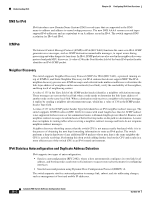 574
574 575
575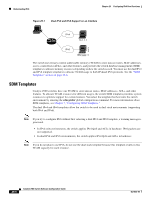 576
576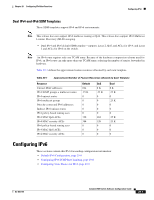 577
577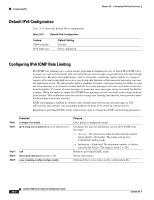 578
578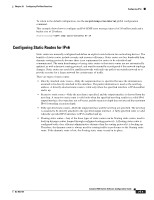 579
579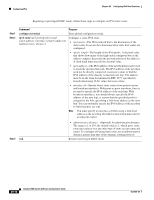 580
580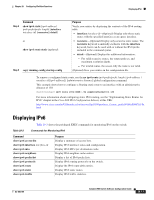 581
581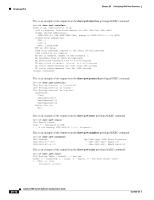 582
582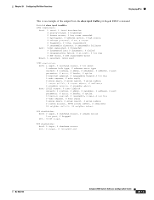 583
583 584
584 585
585 586
586 587
587 588
588 589
589 590
590 591
591 592
592 593
593 594
594 595
595 596
596 597
597 598
598 599
599 600
600 601
601 602
602 603
603 604
604 605
605 606
606 607
607 608
608 609
609 610
610 611
611 612
612 613
613 614
614 615
615 616
616 617
617 618
618 619
619 620
620 621
621 622
622 623
623 624
624 625
625 626
626 627
627 628
628 629
629 630
630 631
631 632
632 633
633 634
634 635
635 636
636 637
637 638
638 639
639 640
640 641
641 642
642 643
643 644
644 645
645 646
646 647
647 648
648 649
649 650
650 651
651 652
652 653
653 654
654 655
655 656
656 657
657 658
658 659
659 660
660 661
661 662
662 663
663 664
664 665
665 666
666 667
667 668
668 669
669 670
670 671
671 672
672 673
673 674
674 675
675 676
676 677
677 678
678 679
679 680
680 681
681 682
682 683
683 684
684 685
685 686
686 687
687 688
688 689
689 690
690 691
691 692
692 693
693 694
694 695
695 696
696 697
697 698
698 699
699 700
700 701
701 702
702 703
703 704
704 705
705 706
706 707
707 708
708 709
709 710
710 711
711 712
712 713
713 714
714 715
715 716
716 717
717 718
718 719
719 720
720 721
721 722
722 723
723 724
724 725
725 726
726 727
727 728
728 729
729 730
730


